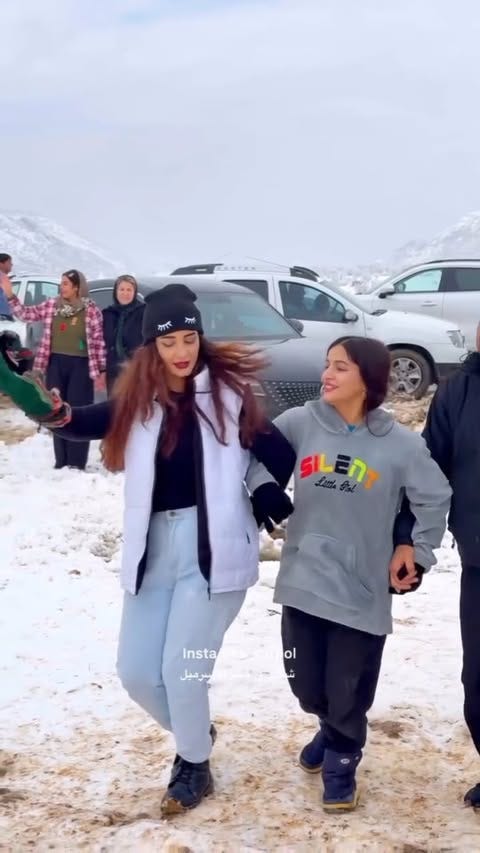There’s something radical about Kurdish dance—Halperke—a simple, rhythmic expression that has the power to bring people together in the most unpretentious way. It’s a dance that asks for so little yet gives so much in return: a moment of connection, of belonging, of shared joy.
And sometimes, it’s so simple. The first snow falls in Kurdistan, and they come together to dance. Not for an event or a festival, not for a ceremony. Just because it snowed, and that’s reason enough.
The ground turns white, the air smells new and cold, and soon the music starts. Someone steps forward. Another follows. They hold hands, a circle forms, growing wider and wider.
What makes Halperke truly radical is how accessible it is. No complicated steps, no choreography to master. Just hold hands, fall into the rhythm, and let the movement carry you. Even the most self-conscious non-dancer will find their place here.
Halperke is community in motion. You touch hands with strangers, and suddenly they are not strangers anymore. For those few minutes, you are part of something bigger than yourself—a web of people moving as one.
It’s low maintenance, no equipment required, no performance pressure. Just being with others, sharing time, space, and movement. It’s the rhythm of the land, the rhythm of snowfall, the rhythm of memory. It doesn’t have to be grand to be radical.
Dancing in this way feels like a reminder that we are meant to move with each other, not apart—hands clasped, feet in sync, hearts full. There is no need for anything but the willingness to move together. In a way, it insists: You are not separate. Not here. Not now.


